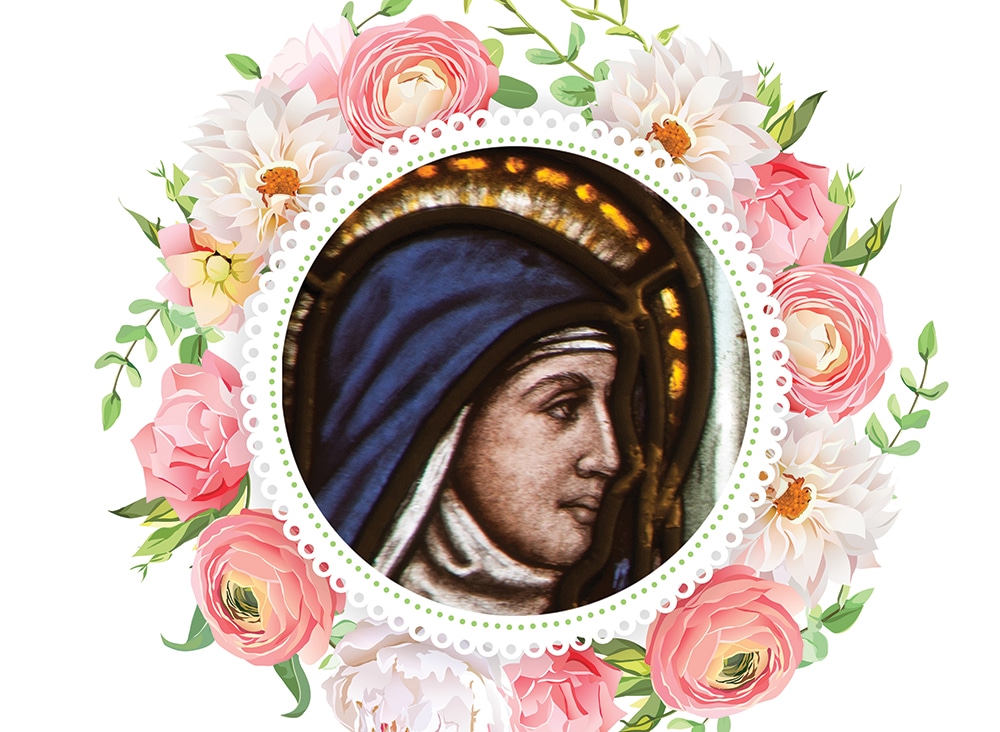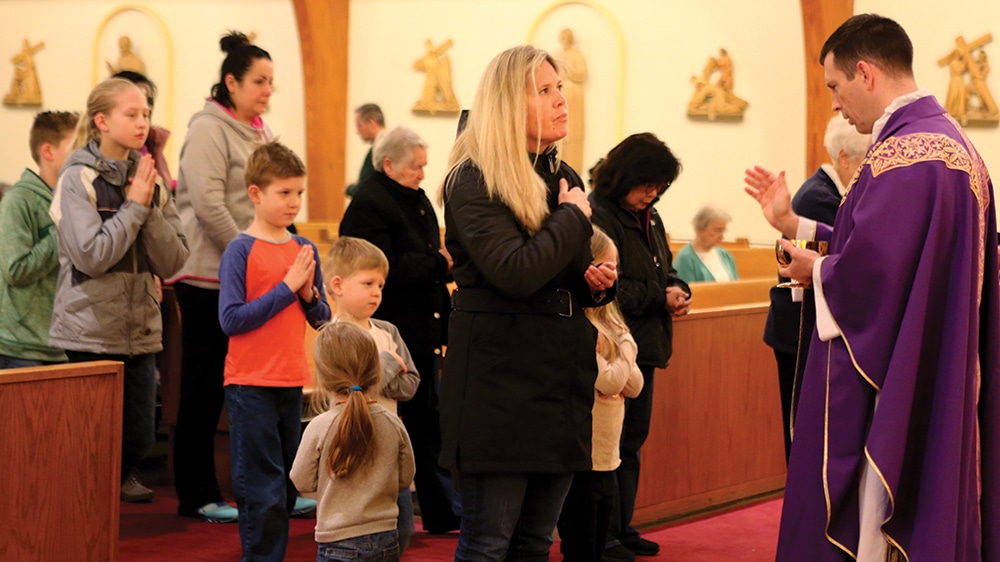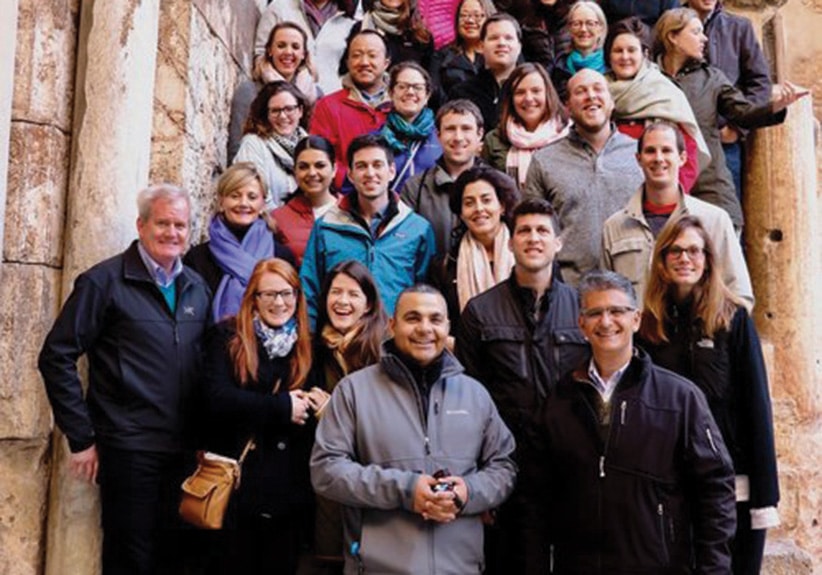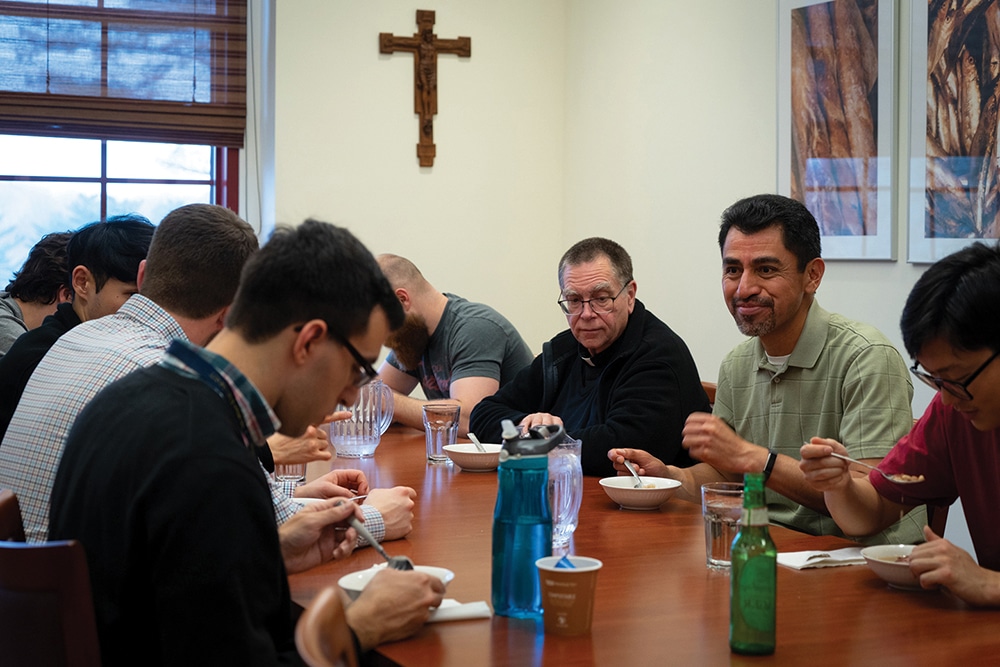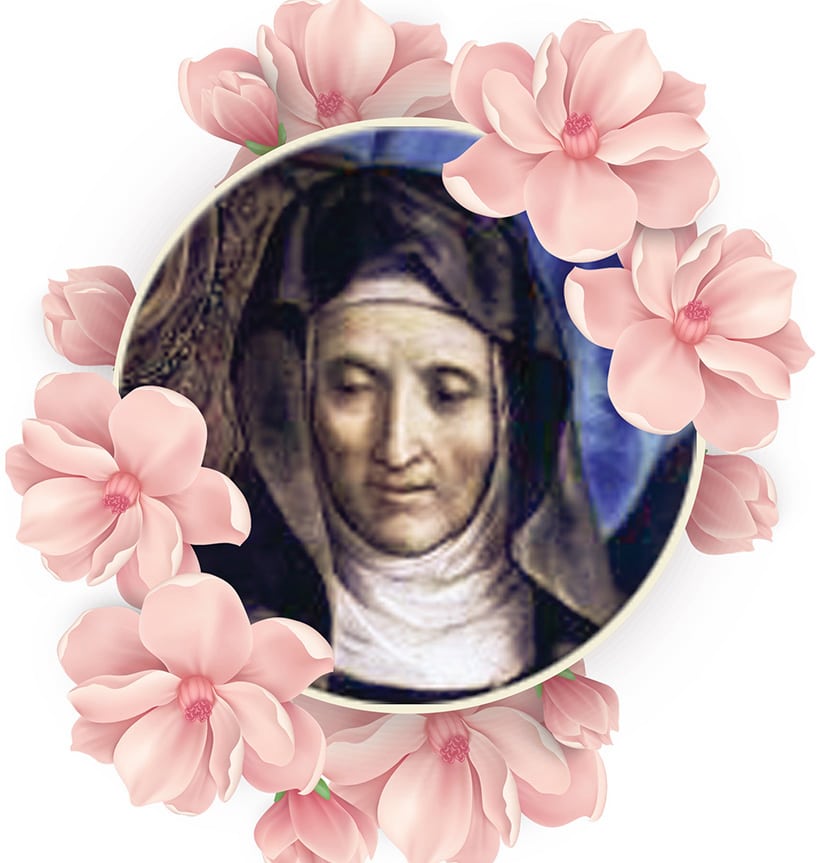This is the second in a series of women in Church history.
No woman of the Middle Ages was more accomplished, more widely renowned than St. Hildegard of Bingen. Some historians acknowledge her as not only a remarkable Catholic leader but the most powerful woman of her era. Born in Germany in 1098, her spirituality would spread across all of 12th-century Europe; popes, kings, clergy and laymen sought out and listened to this mystic who once described herself as a poor little woman.
Hildegard was chosen by God as a prophetess, visionary, abbess, musician, composer, scientist, and writer of dissertations on such subjects as natural history and holistic medicine. She was able to identify diseases, confidentially recommend cures and make prognoses of people stricken with maladies. Among Hildegard’s numerous writings are three books conferring her heavenly visions; she also preached both inside and outside her religious community.
Religious education
At 8 years old, she began her journey to God and the Church. Her parents gave her to the care of a holy woman, a recluse named (Blessed) Jutta who lived next to the abbey at Disibodenberg, Germany. Here Hildegard received a rudimentary education and upbringing in the Church. Around age 15 she began wearing the Benedictine habit. Other children would join under the tutelage of Jutta, and a community of religious formed under the rule of St. Benedict with Jutta as the head. When Hildegard was 38, Jutta died and Hildegard became abbess of a growing monastery. All her life, Hildegard had experienced visions she believed to be from God but never revealed them to anyone. At age 43, a vision told her, “O frail mortal, ashes from ashes, dust of dust, write down everything you see and hear.”
Hildegard further described this vision: “Heaven was opened and a fiery light of exceeding brilliance came and permeated my whole brain, and inflamed my whole heart and my whole breast, not like a burning but like a warming flame, as the sun warms anything its rays touch. And immediately I knew the meaning of the exposition of the Scriptures, namely the Psalter, the Gospel and the other Catholic volumes of both the Old and New Testament, though I did not have the interpretation of the words of the texts or the division of the syllables or the cases and tenses” (“Scivias”).
| POPE BENEDICT XVI AND ST. HILDEGARD |
|---|
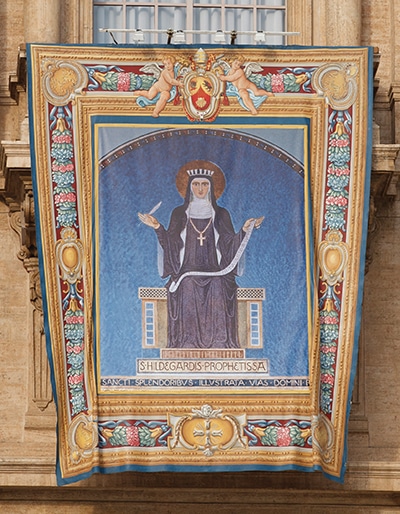 Hildegard, who died in 1179, was never canonized in the universal Church although she was considered a saint by many, including numerous popes. In May 2012, Pope Benedict acknowledged her as a saint through his authority and through a process known as equivalent canonization — that is, she had been venerated for centuries but never officially canonized. Benedict, in October of the same year, declared her a Doctor of the Church. He said, “Hildegard’s eminent doctrine echoes the teaching of the apostles, the Fathers and writings of her own day, while it finds a constant point of reference in the Rule of Saint Benedict” (Apostolic Letter, Oct. 7, 2012). The works of someone named Doctor of the Church are such that they live on and are important to every generation. Only 34 individuals have been named to this lofty status, and four of those are women: St. Catherine of Siena, St. Teresa of Avila, St. Thérèse of Lisieux and Hildegard. |
Visions authenticated
At length, she shared her visions and writings with religious leaders around her, and in 1147 they were provided to Blessed Pope Eugene III (r. 1145-53). Eventually Pope Eugene declared Hildegard’s revelations to be “from God.” He encouraged her to write down everything she experienced.
Hildegard continued writing. Her first book of visions, “Scivias” (Latin for “Know the Ways”), concerns the divine majesty of God, creation, the fall of Adam and Lucifer, marriage and other divinely inspired explanations. Two more books followed, also based on the visions: “The Book of Life’s Merits” and “The Book of Divine Works.” They include man’s relationship with God, of good versus evil, of virtue versus vice, the heavenly kingdom and gifts of the Holy Spirit, among others.
The pope authenticating her spiritual visions gave her great prestige throughout both the Church and secular society. Now people began to gravitate to her and her influence grew. She had wanted to move her community from Disibodenberg to near Bingen on the Rhine, but her request had been denied. In 1150, given her new stature, the move was approved. Fifteen years later she would establish another community in Eibingen, Germany.
Defending the Church
Hildegard would soon involve herself in what she saw as a looming Church crisis. The 12th century witnessed the rise of schismatics and heretical groups in Europe. One such group was the Cathars, who rejected everything about the Catholic Church. They believed that the world was made of good and evil, contending that all matter was evil, including the flesh; thus marriage and child-bearing were evil. Christ came, the Cathars said, as a messenger for good, but he was not man and did not die on the cross; evil continued to dominate the world. Cathars had their own priests and sacraments. Their beliefs were widely popular in the early 12th century, especially within Germany and southern France. Many Christians were looking for something outside the Church, which they saw as becoming more corrupt.
Combined with this heresy was the constant effort by many European monarchs to dominate the Church. They wanted to control the appointment of bishops and thus have great influence on Catholic leadership, the laity and, of course, have access to Church lands and riches.
Using her notoriety and celebrity status, Hildegard began to speak against these evils. King Frederick Barbarossa, Holy Roman Emperor (r. 1155-90), was actively trying to control the Church by appointing individuals as antipopes and forcefully gaining influence on Church ecclesiastical appointments. Hildegard had a challenging relationship with him, and in response to his efforts concerning the Church, she wrote him a letter, saying, “I see you like a little boy or madman. … Beware therefore, that the almighty King does not lay you low because of the blindness of your eyes, which fail to see correctly how to hold the rod of proper governance in your hand. See to it that you do not act in such a way that you lose the grace of God” (“Personal Correspondence of Hildegard of Bingen”). Challenging a monarch in such a way was unheard of, especially by a 12th-century woman. Yet Hildegard was so revered that she was able to do so. She corresponded with many other secular and Church leaders throughout her life, not hesitating to use criticism when she found it necessary.
At age 60, she embarked on another first for a woman by going on four preaching tours throughout southern Germany. She addressed not only other Benedictines but also spoke to the public, always motivated by the visions that God had given her. She encouraged and admonished the clergy to turn away from abuses, the corruption surfacing in the Church, and focus on teaching the message of Jesus Christ. She preached against the Cathars and about the need to draw nearer to the holy Catholic faith. These tours served to make her even more revered and popular.
Exemplary woman
Seemingly there was nothing this extraordinary, holy woman couldn’t do. She lived to age 81 at a time when life expectancy was in the 30s. Today it is difficult to comprehend the breadth of her accomplishments. Undeniably, she lived a consequential life spent in the service of God and her fellow man. She made a difference not only in the time she lived, but she was a model to others who came after her. Pope Benedict XVI said in his apostolic letter proclaiming her a Doctor of the Church, “In Hildegard are expressed the most noble virtues of womanhood: hence the presence of women in the Church and in society is also illuminated by her presence both from the perspective of scientific research and that of pastoral activity.”
D.D. Emmons writes from Pennsylvania.

